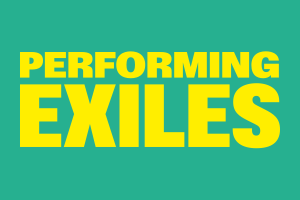
Performance
Uncanny Valley
Rimini Protokoll (Stefan Kaegi) & Thomas Melle
Münchner Kammerspiele
Revival

Rimini Protokoll (Stefan Kaegi) & Thomas Melle: “Uncanny Valley” © Gabriela Neeb
The machine as actor – how far will the illusion go? Can a robot move us like a human does? To present the play “Uncanny Valley” an animatronic double of the writer Thomas Melle has been created – a deceptively real robot that stands on stage instead of the author.
We are familiar with robots principally as working machines. Those used in German industry bear little resemblance to human beings in order to avoid emotional complications. In Asia, on the other hand, humanoid robots have already been in production for some time, used to care for the elderly or as sexual partners. These machines’ external resemblance to human beings is intended to make them be accepted more easily. However, it arouses our mistrust: what is human and what is machine? The Japanese roboticist Masahiro Mori has discovered that humanoid robots do not achieve greater acceptance the more they resemble human beings, instead their acceptance declines rapidly and it only increases again much later, once the artificial machine is barely distinguishable from a human being. This gap in acceptance that manifests itself in the disturbing zone between “real” and “artificial” is what Japanese roboticists call the “Uncanny Valley”.
To present the play “Uncanny Valley” an animatronic double of the writer Thomas Melle has been created – a deceptively real robot that stands on stage instead of the author. The machine as actor – how far will the illusion go? Can a robot move us like a human does? Can we even tell the difference? The real Thomas Melle observed and Stefan Kaegi documented how engineers reconstructed his body out of servomotors and silicon and programmed it so that the motors would copy even the smallest details of his repertoire of movements. Using fine mechanics, make-up and costumes, the humanoid robot became a performer whose mimicry, gestures and language might inspire empathy – but empathy with who? With Melle himself, who’s no longer present, or with the robot? Who is it who’s talking in the uncanny valley?
In this play by Rimini Protokoll a future is projected onto the machine in which the human original is just as real as its technological double. Thomas Melle hands control to a double that takes his place, reflects on the relationship between them and enables this thinking to be repeated identically as a highly polarised course of events night after night. The original and the copy elide into each other in a fascinating way, a surprising example of the interpenetration of nature and technology: how much of the human Melle is in this technology and how much technology is already there in the human version?
Revival as part of “CELEBRATENOW – 20 years Rimini Protokoll”.
Stefan Kaegi – Concept, text, direction
Thomas Melle – Text, Body, Voice
Evi Bauer – Design
Chriscreatures Filmeffects GmbH – Animatronics
Tommy Opatz – Manufacture & Art Finish of the Silicon Head / Colouration & Hair
Martin Valdés-Stauber – Dramaturgy
Mikko Gaestel – Video Design
Nicolas Neecke – Music
Epona Hamdan – Head of Production Rimini Protokoll / Touring
Robert Läßig, Lisa Eßwein, Martin Schwemin – Lighting Design / Touring
Nikolas Neecke – Sound and Video / Design Touring
Produced by Münchner Kammerspiele
In co-production with Berliner Festspiele / Immersion, donaufestival (Krems), Feodor Elutine (Moscow), FOG Triennale Milano Performing Arts (Milan), Temporada Alta – Festival de Tador de Catalunya (Girona), SPRING Utrecht
